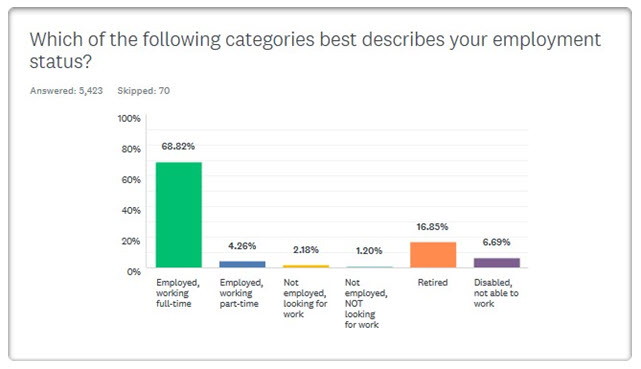Safety and Awareness – Look
Help! Make it turn!
The Look – In our article on cornering we talked about the 4 basic steps “slow, look, press. and roll.” We also discussed the proper way to slow your machine for corner entry, but now we need to consider step 2, “the look.”
If you ever participated in any motorcycle rider training you probably heard the instructor say “turn your head, the motorcycle will go where you look.” I know I have heard that, and I have said it a gazillion times too. This is true rather you are making tight slow speed turns or road speed turns, but how do you look, and why does this work? Well let’s talk about the why first
Now you may not have thought of yourself this way, but we humans are designed as predators. We have eyes set in the front of our head to better judge speed/distance, and a head that swivels to give us a wider range of view. We also predominately use a very narrow area of focused vision (about 2°) to see those things that concern us. This is handy when we are chasing down prey, but not so handy as motorcyclists, so we need to relearn how to use our vision to be more proficient through corners. In Lee Parks book Total Control and in his courses on advanced cornering there is a lot of time spent on vision and how to use it. All that material would make this article entirely too long, but it is helpful to use Lee’s analogy that your vision is like the beam of a Maglite flashlight, narrow (focused) or wide. You can practice using both just sitting in a chair at home. First focus on an object then practice looking through that same object. You will see that when you look through an object your peripheral vision becomes a bit more pronounced. This is not a parlor trick, your peripheral vision is always there, but it is filtered by your subconscious until you release your focus on an object. You need to use both types of vision for skillful cornering, and here’s how.
As you approach your corner pick a spot on the roadway to begin your turn, your entry point. Focus on the entry point as you approach and remember it, but before you get to the entry point turn your head and use that wide field of vision to get all the information you need about the turn (radius, slope, surface condition, etc.). You will instinctively know when you have reached your entry point, and that is where you begin your turn without looking forward again. This sounds easy, but it takes practice because we have to fight that overwhelming desire to always look directly forward (and focused) on exactly where we are walking. That works well when walking at 3 mph but not so well at highway speeds on your motorcycle. If you want to corner skillfully you have to turn your head and look at where you want to end up. This helps you to relax more and enhances awareness of any issues you might encounter ahead of time. One of the most common mistakes riders make in using their vision through corners is not turning their head enough.
Brothers and sisters, our heads are mounted on a swivel for a good reason, to give us more visual information. Again sitting in your chair keep your head pointed forward and look as far as you can to your right. Now keeping your eyes on that spot slowly turn your head to the right. Notice how much more visual information your brain received after you turned your head. That’s what we accomplish when we turn our head before a corner. No wonder it works. If you are entering a 90° turn, turn your head 90°. Making a U turn? You have to look behind the bike before you start the turn. Can’t turn your head that much? Turn it as much as you can and always look at where you want the bike to end up.
Another common vision mistake made by riders is something I call “checking.” That overwhelming desire we have to focus on exactly where we are in a corner can cause us some real problems. Remember, once you have turned your head to go through a turn, don’t look back forward (or down) again to check where you are in the turn. If you do, your first instinct will be to focus on some object (like the center stripe or side stripe) and subconsciously that’s where you will steer the bike. Your line through the corner will be much more consistent if you keep your head turned and rely on your peripheral vision to tell you your position relative to the center stripe or side stripe of the roadway.
Remember, turn your head to turn the bike and look at where you want to end up.
See ya on the road,
Jude




